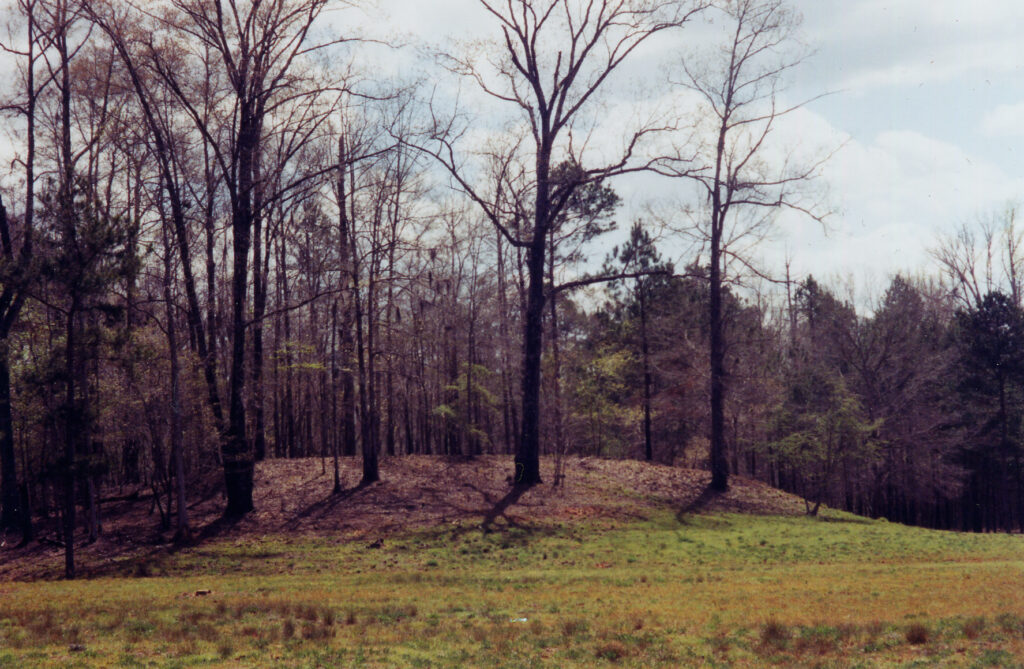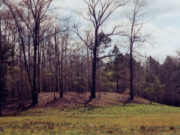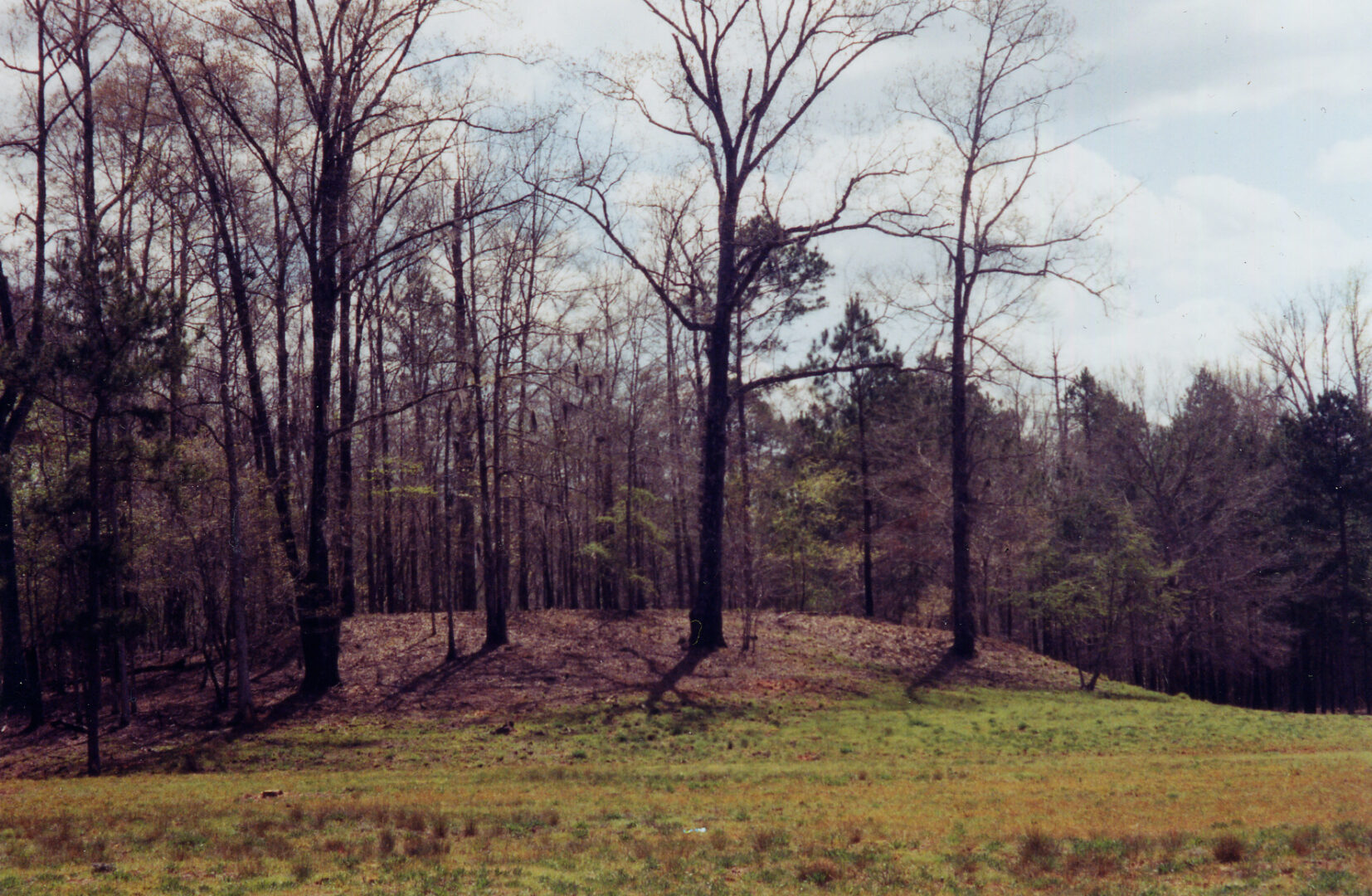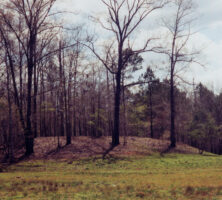Dating to the Mississippian Period (A.D. 800-1600), the Singer-Moye site, located in south central Stewart County, is home to eight earthen mounds ranging from three to forty-six feet in height. The well-preserved site, which occupies approximately thirty-five acres of mixed pine and hardwood forest, is named for the families who donated this land in 1968 to the Columbus Museum in Columbus. In 2008 the Georgia Museum of Natural History, at the University of Georgia in Athens, assumed ownership of the property.

Photograph by Elisabeth Hughes, New Georgia Encyclopedia
The Singer-Moye site doubtless served a significant sociopolitical role in the prehistory of the Chattahoochee River basin and perhaps of the surrounding areas. The fact that the site was occupied, whether continuously or at different times, for a span of more than 300 years attests to its prominence. Singer-Moye’s numerous and complex arrangement of mounds, several of which are large and show evidence of later additions, further support the notion that this site was a special place in the local Mississippian settlement system. Exactly what functions and services this site and its inhabitants provided to the peoples of the lower Chattahoochee basin are unknown, but it likely was a place for social governance and periodic meetings and rituals, as well as the year-round home of a sizeable community.
Professional archaeologists first visited the site in the late 1950s, when Joseph Mahan of the Columbus Museum of Arts and Crafts (which became known later as the Columbus Museum) and Harold A. Huscher of the Smithsonian Institution in Washington, D.C., collected a small number of surface artifacts. From that time until 2007, teams from the University of Georgia and the Columbus Museum intermittently conducted a variety of tests and excavations in Mounds A, C, D, E, and H. Also discovered were extensive cultural remains and middens, or trash heaps, that indicate the presence of a sizeable village associated with the mounds. As of 2008 Mounds B, F, and G had not been excavated.
Mound A, the largest mound, is believed by some archaeologists to have been the home of a powerful chief. Excavations of this mound revealed the remains of a 39-by-39-foot structure on the summit, with copper fragments, mica sheets, stone discoidals (rounded stones used for games), numerous smoking pipes, and a fragment from a painted bottle featuring a human head effigy. Researchers also found evidence that this structure was burned and later covered by a clay cap.
Excavations on Mound C revealed five mound stages, and archaeologists recovered a small sample of ceramics with a high proportion of decorated bottles and beakers, which were used as fine serving wares. Mound D appears to have been built into the existing hillside, where a natural terrace was shaped into a rectangular platform. Six large fire pits were uncovered on the summit of Mound D, along with pottery and pipe fragments, sandstone discoidals, daub, and red ochre.
The majority of Mound E has been excavated, revealing the remains of a wattle-and-daub earth lodge with a red clay floor and white clay daub walls. The excavation of Mound H exposed portions of several structures, a section of palisade wall, pottery (including decorated bottles), mica sheet fragments, and other artifacts. These finds reveal the most complex set of features uncovered at the site as of 2008.
Ceramic collections and radiocarbon dates from the excavations firmly place Singer-Moye within the Mississippian Period of the greater Southeast. These artifacts and dates, however, provide only a fragmented history of mound use, given that several of the mounds and early mound stages have yet to be tested. So far, Mound C has yielded the earliest dates of A.D. 1100-1200, a period known as the Rood I phase, named after the nearby Rood’s Landing site. Mounds E and H were used during the Rood III phase, A.D. 1300-1400. The final use of Mounds A and D dates to the Singer phase, A.D. 1400-1450.






